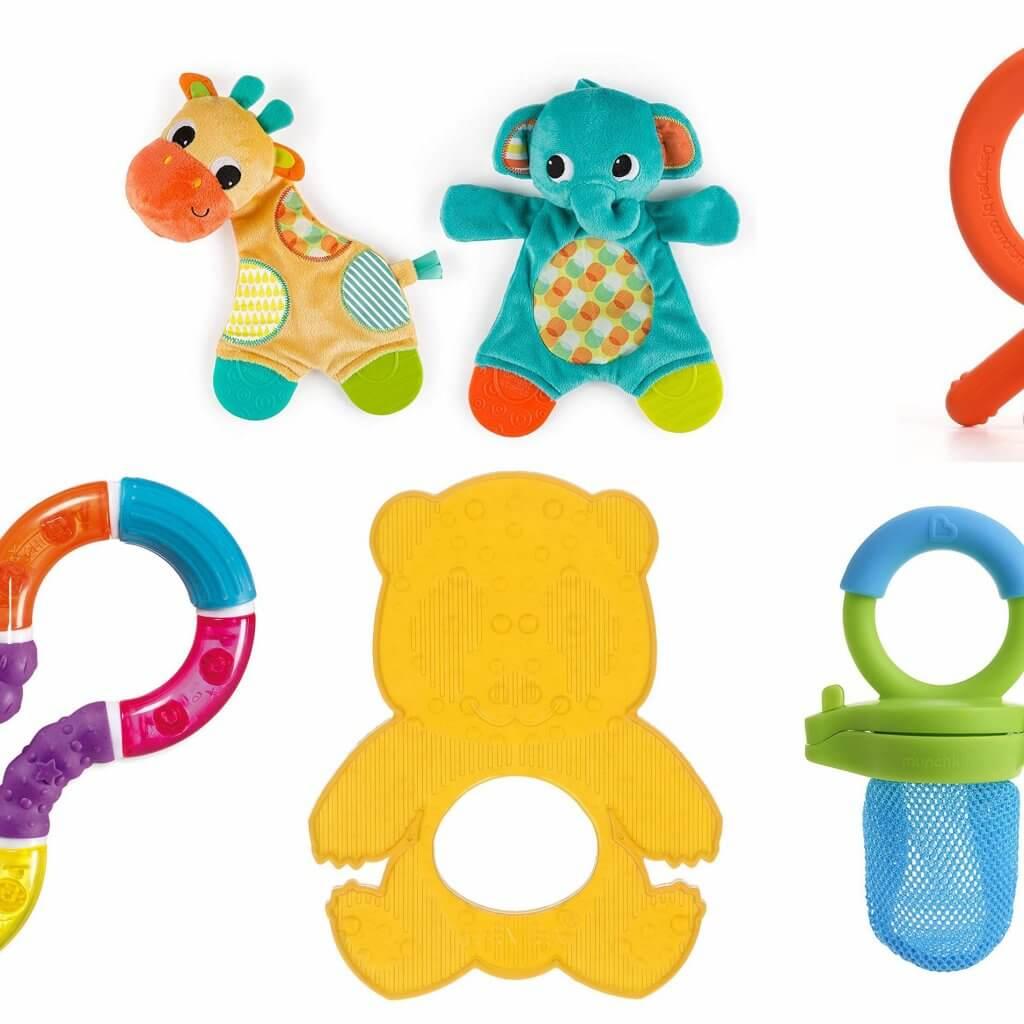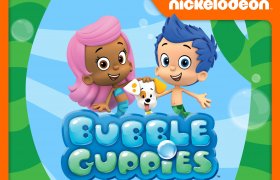Everything you Need to Know About Teething

When your baby begins teething it can be tough for both you and her. Granted, she’s the ones who’s in pain so it’s a little tougher on her than you, but it’s still no fun seeing her hurt, and trying to figure out how to soothe your baby’s pain can certainly be a taxing process.
It isn’t always easy to know exactly when your baby begins teething and it can be difficult to figure out a solution to all the discomfort she experiences, but there’s no shortage of ways to make the teething process a little easier for everyone.
Signs and symptoms that your baby is teething
Not every baby experiences every single sign or symptom of teething—and there are certainly a lot of different ones—but here are some pretty good indicators that the process has begun:
- A tooth becomes visible below the gum
- Excessive Drooling
- Irritability and consistent fussing
- Difficulty sleeping
- Decreased appetite
- Swollen gums
- Slight fevers
- Biting, sucking, or chewing on anything she can
- Excessively grabbing her ears or rubbing and pulling on her cheeks and chin
If you notice any combination of these signs and symptoms occurring at one time, chances are your baby is teething. Not sure what to do about it? Well, have no fear. There’s a wide variety of tips and remedies to help you and your baby get through it together. The best part about these remedies is that they’re natural and they can all be used at home and on your own—making it so that you don’t have to turn to a professional such as a dentist, to mitigate your baby’s pain.

Your freezer and refrigerator will become some of your very best friends
Attacking the pain with cold is a great way to help soothe your baby’s gums. Turning to your freezer or refrigerator to tackle teething is an excellent choice because the cold acts as a very effective numbing agent.
Frozen Washcloth:
Using a frozen washcloth is a very popular method and it’s just so simple. All you have to do is put a damp washcloth in your freezer, leave it in for 20-minutes so you make sure it gets nice and cold, then knot it up and let your baby chew on the knot for a while. If you’d like, you can even soak the washcloth in chamomile tea as opposed to water.
Since chamomile tea works as a great pain reliever, you’ll get the twofold benefit of giving your baby a cool and comfortable numbing effect, while also providing her with an effectual pain reliever. You can even use catnip tea if you’d like. It has similar effects to chamomile tea.
Make sure that the washcloth is too big to be swallowed.
Frozen bottle:
You can fill one of your baby’s bottles with water and then freeze it while it’s upside down. Freezing it while the bottle is upside down will guarantee that the water is frozen in the nipple. Once you have the frozen bottle, just let your baby chew away on the cold nipple.
Chilled spoon:
If you stick a spoon in the refrigerator for a bit—ensuring it gets to a cold yet still comfortable temperature—you can let your little one chew and suck on the spoon and the teething pain will subside.
Fill a mesh feeder with frozen food: This method is great for soothing your baby’s gums and getting the nutrients that she needs. Try crushing and freezing some carrots, apples, or bananas and then put them into a mesh feeder. Allow your baby to gnaw on the feeder, and she’ll get equal doses of relief and healthy foods.
Homemade popsicles:
Try making some of your own popsicles using natural fruit juice and let your baby chew on the finished product. It’s a lovely way for your baby to have a tasty treat and get the numbing effect she needs to soothe her pain.
Homemade ice cream:
This is another method that gives your baby some relief while also enjoying a treat. The recipe is a simple. Just put mix a 1/2 cup of organic rice cereal, 1 can of organic pears, and 6 scoops of your go-to baby formula.
Chilled pickle Juice:
You can also try freezing some pickle juice. Just like you would with the washcloth method—instead of using water or chamomile—soak the washcloth in pickle juice, let it freeze, and let you baby safely chew away on the cloth. The sourness of the pickle juice works as an additional numbing agent to the cold that’s already so effective.
Chilled rice pouches:
Rice pouches are great because of textural reasons. Again, you’ll use a washcloth to help get the job done. Put one tablespoon of raw rice in the middle of the washcloth, then wrap and tie the middle part with a rubber band. Go ahead and place the pouch in the freezer, then dampen the cloth a bit and you’re ready to go.
Not all foods you turn to have to be frozen or chilled
There’s a number of different foods you can turn to without having to freeze them. Some foods that are great for soothing teething pain include beef jerky, green onions, and Eggo waffles.
Dried is great since it’s so durable and is practically made for chewing. Your baby will be set even if you give her just one piece of dried mango for the day. Given its durability and the fact that your baby doesn’t have huge chompers, the mango will last quite a long time.
The green onions are so effective because of the rubbery texture of the white part of the onion. Cut off the green part, salt the white part, then let your baby have at it.
Organic frozen waffles work well because of the texture of the bumpy surface. Slowly chewing on the waffles also allows them to eventually turn into a soft mush that won’t be too harsh on your baby’s gums.
Massages
If you’d like,you can help relieve your baby’s pain by literally taking matters into your own hands. Use your (clean) fingers and hands to give your little one a gum and facial massage. Rub the face, gums, or jaw in a circular motion several times a day. It isn’t exactly a day at the spa—and your baby might be a little resistant at first—but it’s certainly a simple way to effectively ease the pain.
Having your child chew on a toothbrush (while supervised) is also an effective way to get a good gum massage.
Breastfeeding
If your baby is still breastfeeding, you might want to try nursing her a little more than usual. Your baby might develop an initial aversion to the breastfeeding method because the sucking might irritate the gums a bit, or you might even notice that she doesn’t want to breastfeed at all once the teething process begins.
It’s not a method that’s effective for every baby as it can cause comfort in some and discomfort in others—and it’s mostly dependent on whether your baby wants to breastfeed or not. But of course, it’s worth a shot if she seems willing. Also, breastfeeding is a great way to boost your baby’s immune system.
Bath time
Taking a warm bath won’t really ease any gum pain but it’s still nice and relaxing. Not only does it relax the body and reduce any stress, but it’s also a nice distraction.
Many types of teethers
If your baby is receptive to teethers you won’t have any trouble finding one to help aid the pain associated with teething. Not every single type is guaranteed to help your baby, but there’s enough out there and enough ways to utilize them that you’ll most likely find at least one option that works.

The market is full of safe teethers made from a variety of materials such as rubber, silicone, wood, and cotton. Many of them are dishwasher and freezer safe, allow you the ability to fill them with water (which is great for chilling), and there are some that even vibrate—which allow soothing stimulation to your baby’s gums.
Over-the-counter pain relievers
You can try very small doses of infant acetaminophen or ibuprofen but make sure you consult your physician first—especially if your baby is between 3-6 months old.
Maybe you thought that remedying your baby’s teething discomfort was impossible. Thankfully, there’s so many ways you can quell your baby’s pain from home. It’s not nearly as complicated of a process as you may have previously thought—which is great news for both you, and especially for your baby.







